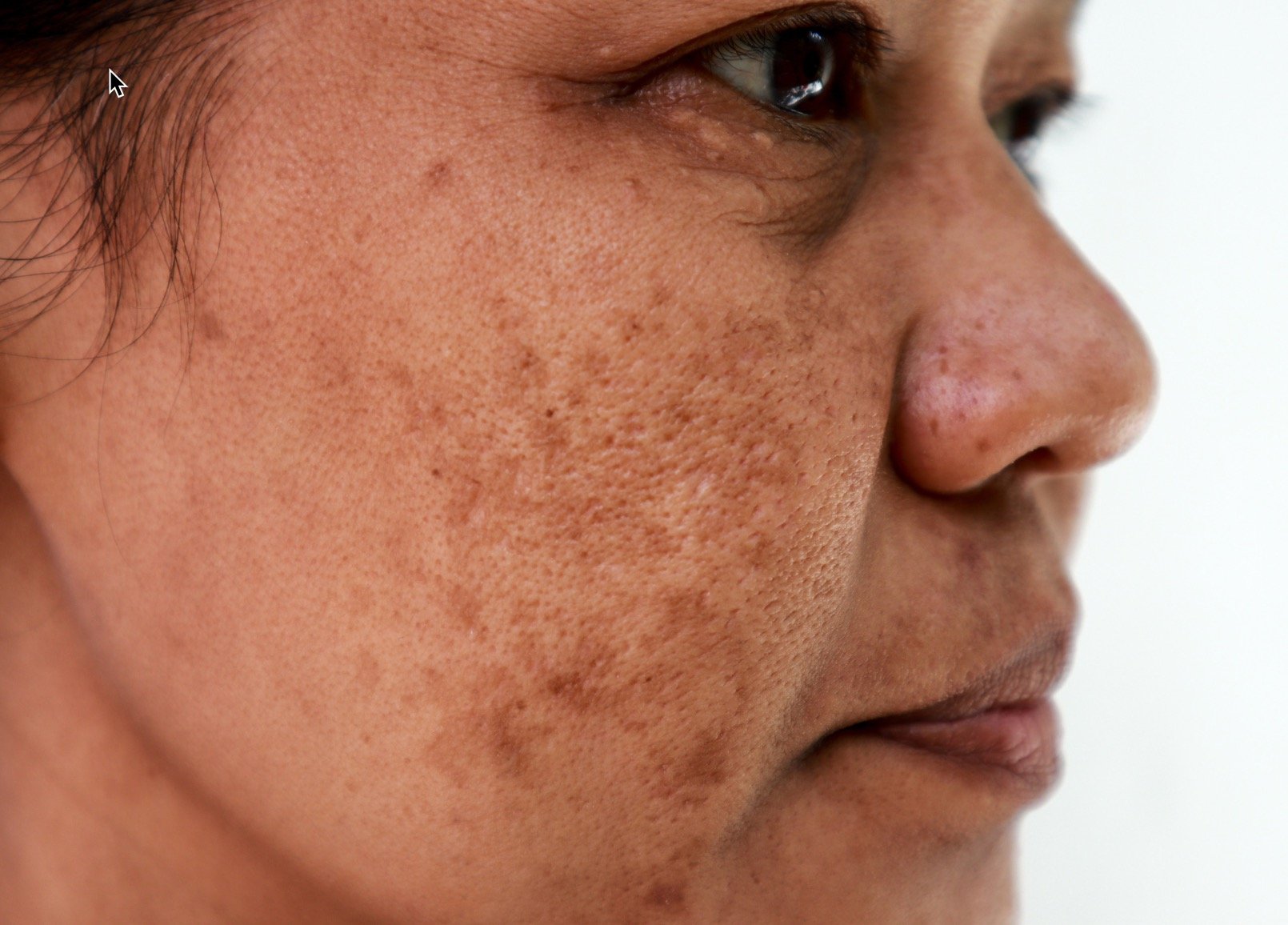Melasma
What is melasma?
Melasma is a blotchy, brown darkening of the facial skin, usually appearing symmetrically on both sides of the face. Often called the “mask of pregnancy,” it commonly develops during or after pregnancy or after starting or stopping birth control and is much more common in women. Melasma doesn’t itch or hurt, but it can be cosmetically bothersome.
Why do I have melasma?
Melasma often runs in families, showing a clear genetic component. Hormonal changes—such as pregnancy, starting birth control pills, or using an IUD—are common triggers. Sun exposure makes melasma darker, so it is more noticeable in the summer. In some cases, thyroid issues can also contribute.
How do I fix melasma?
Melasma is difficult to treat because sun exposure makes it worse. Consistent sun protection is essential—without it, nighttime treatments are not very effective (see my pages on sun-protective clothing and sunscreen for skin of color).
BEDTIME ROUTINE:
Rinse your face with a gentle facial cleanser.
Apply a very thin layer of one of each bullet below:
Hydrocortisone ointment (helps reduce irritation from the first two)
WARNING: Overuse of topical steroids like hydrocortisone can cause thinning, stretch marks, and easy bruising.
Optional: Niacinamide serum right after the acid serum above if tolerated.
Seal with a thick layer of Vaseline or CeraVe cream.
MORNING ROUTINE:
Rinse face with a gentle facial cleanser (hydrating or foaming)
Apply a thin layer of azelaic acid or Mela B3 serum.
Apply a facial moisturizer with sunscreen (SPF 30 or more).
Moisturize as needed throughout the day with CeraVe cream or Vaseline.
How to use adapalene at bedtime
Start with clean, dry skin.
Dab a pea-sized amount of adapalene gel on the forehead, sides of the face, and chin (outer areas of face).
Rub it in gently.
Use whatever is left on your fingers to lightly spread around the nose, cheeks, and lips (these spots are more sensitive).
💡 Note: This will make your skin dry and flaky at first. That’s normal—it happens to everyone. Your skin will adjust after a few weeks.
🚫 Warning: Don’t use adapalene if you’re pregnant or trying to become pregnant. It may harm a developing baby.
After Adapalene: Moisturize
Right after applying adapalene, use lots of moisturizing cream or ointment. My favorites are CeraVe cream, Vanicream cream, or Vaseline (#SlugLife)
Put on a thick layer and go to bed a little shiny—your skin will soak it in overnight.
🕒 Stick with adapalene for at least 30 days—it takes about a month to start seeing results.
What if my melasma isn’t getting better?
Most people improve with the steps above, but melasma can be stubborn. It’s often best to start treatment in the winter when sun exposure is less intense.
In 2020, the FDA removed over-the-counter hydroquinone (a skin-lightening cream) because overuse can cause permanent dark spots (ochronosis). Dermatologists can still prescribe stronger combination creams that include hydroquinone if over-the-counter treatments are not enough.
If your melasma isn’t improving, look for a board-certified dermatologist. If you are in or near Utah, see one of my excellent colleagues at the University of Utah or me virtually with Honeydew.
DISCLAIMER
The statements expressed and content of this website are not intended to be a substitute for professional medical advice. Readers should seek their own professional counsel for any medical condition or before starting or altering any treatment, exercise, or dietary plan. Please see our full disclaimer here.

